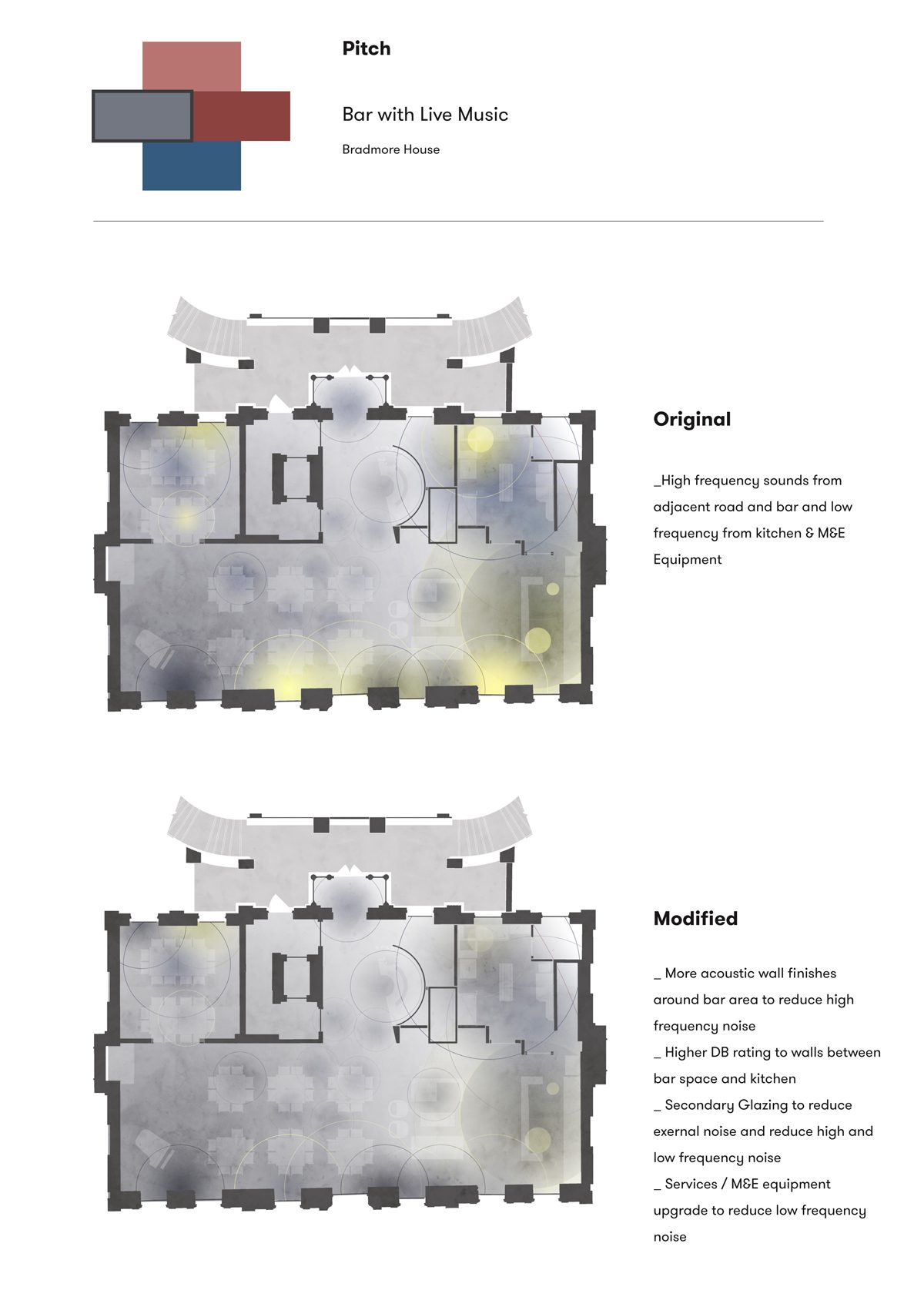Mark Shaw
Emma Hugh
Harriet Saddington
Joe Morris
Noting that discussions in design circles tend not to stray beyond reverberation times, Studioshaw undertook a comprehensive examination of the emotional responses to sound, citing the well-known ‘truth’ that ‘there is no such thing as bad music’ – it depends, rather, on both the listener and the context. At a yoga class, Mark Shaw noted, some people enjoy music while others prefer silence.
The team polled the entire staff of collaborating practice Morris and Company to identify common associations of particular colours with their emotional responses to sounds, and also produced colour spectra to describe the measurable qualities of sound, from pitch and volume to reverberation time.
These colour codes could be combined to create a simple graphic language that not only describes the acoustic qualities of a space, but the experience of it.




The combination of colour-coded rectangles produces a graphic identifier for the physical and emotional qualities of an acoustic environment, which the team christened the ‘AcouSticky’. These are gathered in a compendium – a ‘Dictionary of Acoustic Combinations’ – that is proposed as BIM plug-in, thereby allowing the acoustic environment to truly integrate with conventional spatial and volumetric models.
The team used two real-life situations – Morris and Company’s own offices and the Grade II-listed Bradmore House, which Studioshaw is converting into a café, bar, restaurant, events venue and coworking space – to test the ‘product’, mapping both existing qualities and proposed improvements on plans.
Responding to the presentation, Chiara Morbelli, acoustician at Atkins, stressed the significance that sound plays in the environment, whether we are unwitting or willing listeners, while Bartlett professor Laura Allen observed that nothing is more disturbing than total silence.



















